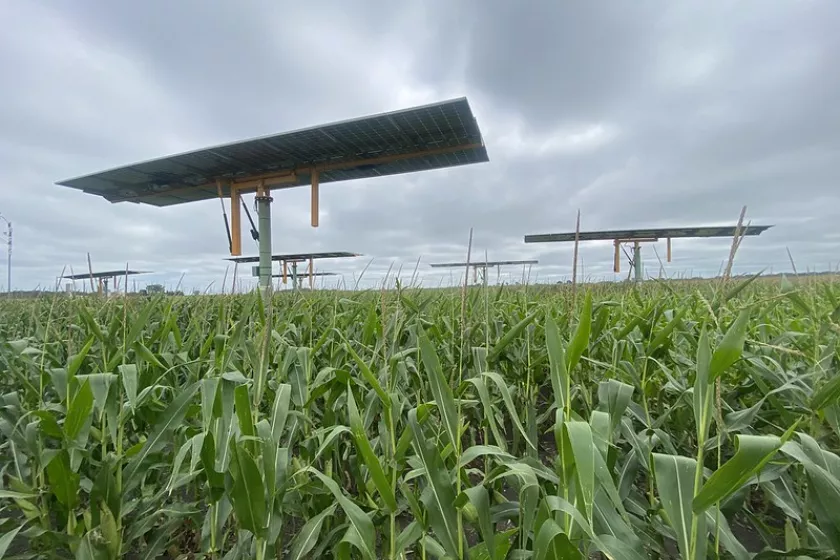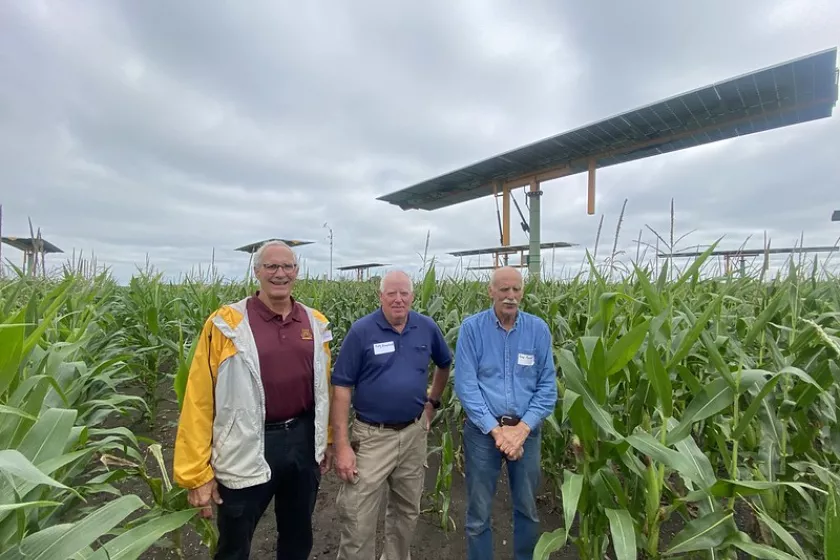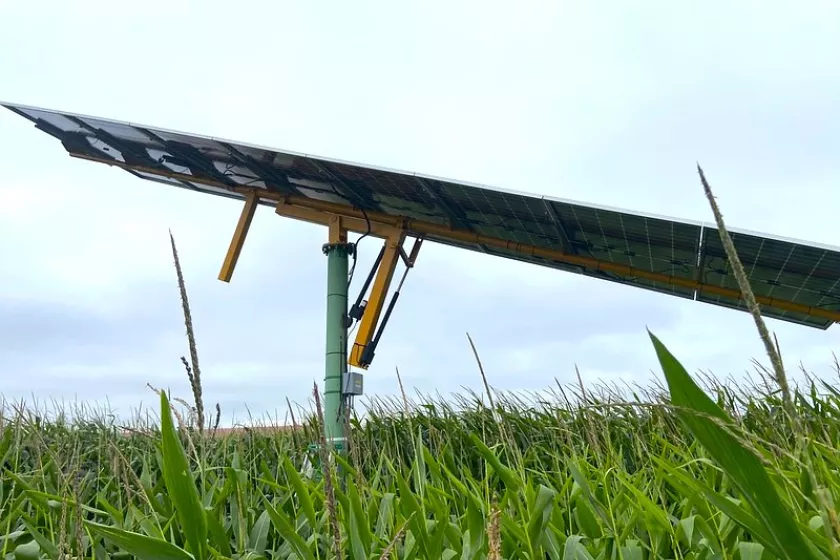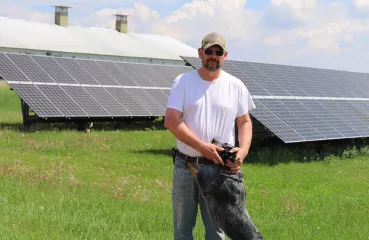“Things do change.” 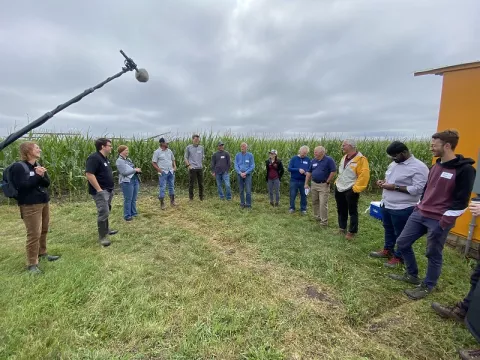
That was the theme of a recent agrivoltaics event in west central Minnesota. Agrivoltaics is when farmers grow crops under or around solar panels. (Think of it as harvesting the sun twice!)
In August a group of about 25 folks (including clean energy enthusiasts, farmers, or some combination of both) gathered in the city of Olivia, Minn., to tour and learn more about the “Rauenhorst Farm Agrivoltaics Project.” The project is focused on a one-of-a-kind solar array design that’s been in the works for nearly five years. Housed on the Rauenhorst Farm in Renville County, the 36 kilowatt-hour (kWh) array stands 14 feet tall over a corn and soybean rotation field. It’s an especially exciting technological development for a farm that’s been in the Rauenhorst family for generations.

